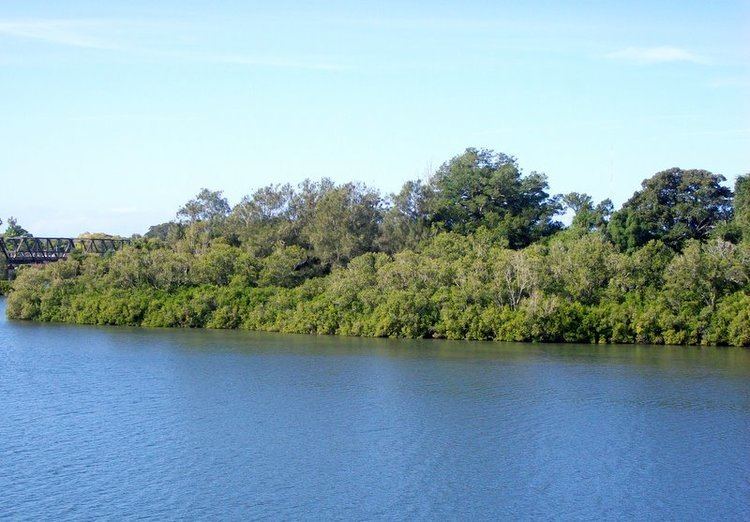Nearest town or city Taree | Area 6 ha | |
 | ||
Established September 1981 (1981-09) Managing authorities Website Coocumbac Island Nature Reserve See also Protected areas of
New South Wales Management National Parks and Wildlife Service Similar Willi Willi Caves, Kattang Nature Reserve, Wingham Brush Nature R, Middle Brother National, Boorganna Nature Reserve | ||
Kylies beach campground crowdy bay national park north east of taree nsw
The Coocumbac Island Nature Reserve is a protected nature reserve located in the mid–north coast region of New South Wales, Australia. The 6-hectare (15-acre) reserve, situated on the Manning River near Taree, is a rare example of a subtropical lowland rainforest.
Contents
- Kylies beach campground crowdy bay national park north east of taree nsw
- Fauna
- Flora
- Mangroves
- Etymology
- References
Much of Australia's lowland sub tropical rainforest was cleared for housing and agriculture, leaving only small patches remaining, such as at Coocumbac Island. The soils are derived from the Manning River. These alluvial soils are enriched from basaltic deposits upstream at Barrington Tops and the Comboyne and Bulga plateaux. The average annual rainfall in nearby Taree is 1,176 millimetres (46.3 in).
Fauna
The most obvious mammal species on the island is the grey-headed flying fox, whose numbers may reach five thousand at certain times of the year. Noteworthy birds occurring here include the osprey and wompoo fruit-dove.
Flora
The ecological community on the island is known as the large fig - giant stinger tree association. The genus ficus is well represented, with all the strangler figs of this latitude present. Particularly prominent are the large Moreton Bay figs. Other figs are deciduous fig, strangler fig, small leaf fig and watery fig. The town of Taree, takes its name from another of the local figs, the sandpaper fig.
Other tree species include stinging tree and the native olive. The native elm grows on the island, here at its southernmost point of natural distribution. A large native hackberry occurs on the island, 30 metres (98 ft) tall and with a trunk diameter of 1.2 metres (3 ft 11 in). Less common trees include white walnut and the Australian rose mahogany.
Rainforest regeneration programs have been put in place to encourage local rainforest species and suppress the problem of invasive weeds.
Mangroves
Surrounding the island is an impressive community of two species of mangroves; grey mangrove and river mangrove.
Etymology
Coocumbac means "meeting place" in the local indigenous Biripi language. Australian indigenous people regularly visited the rainforest for the collection of food, medicinal purposes, the collection of fibres for making bags and nets and social gatherings. The rainforest has spiritual significance to the traditional indigenous custodians.
